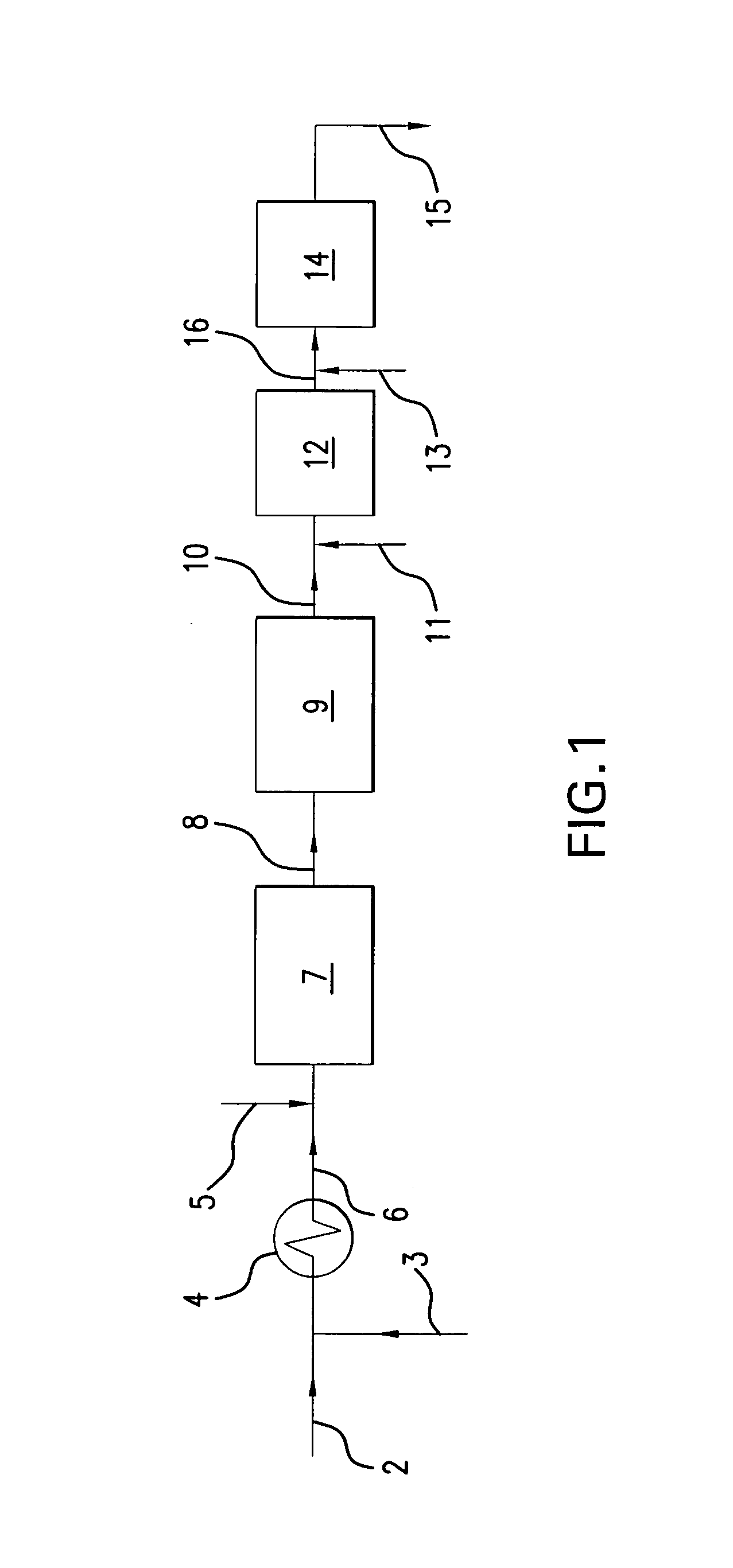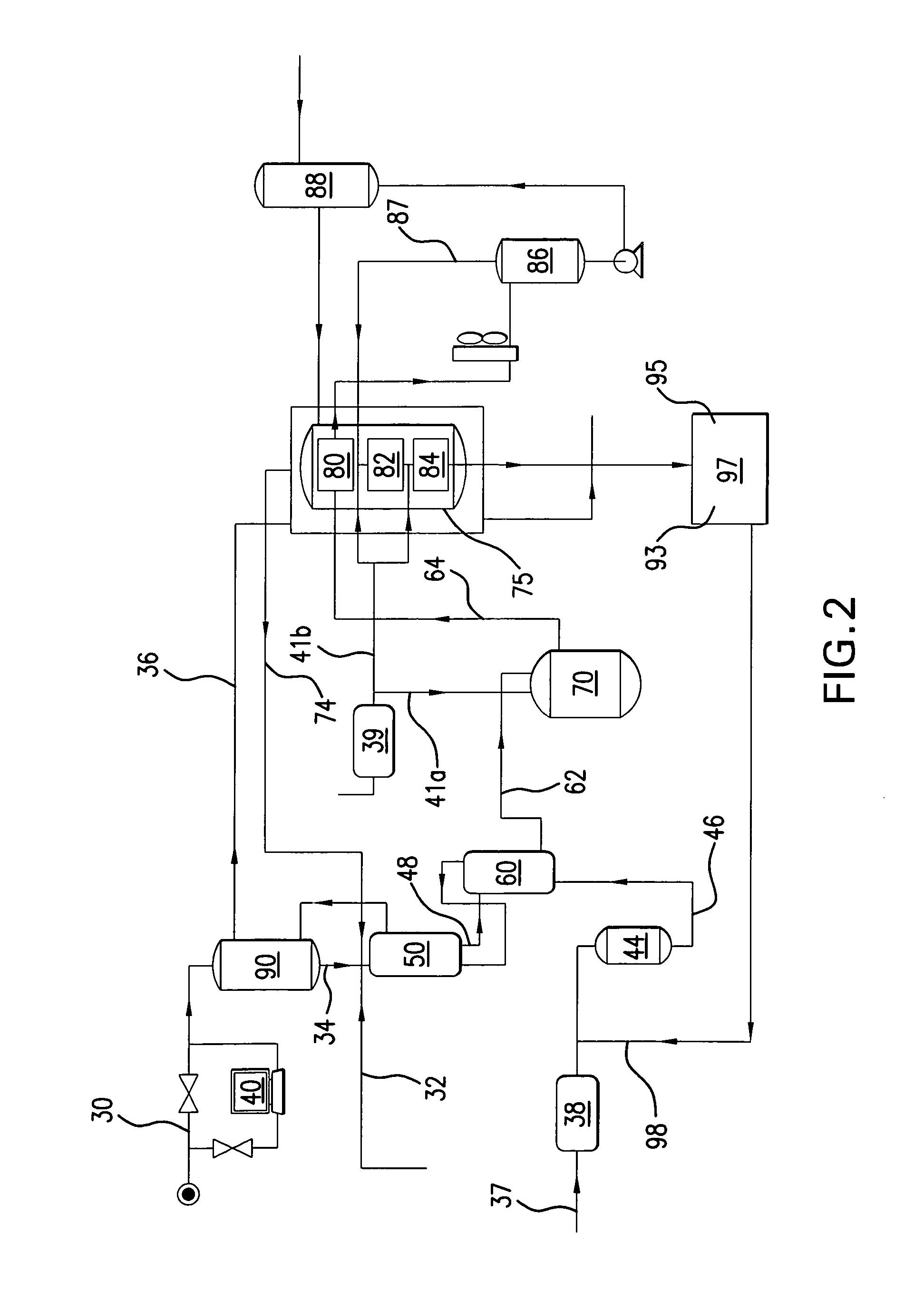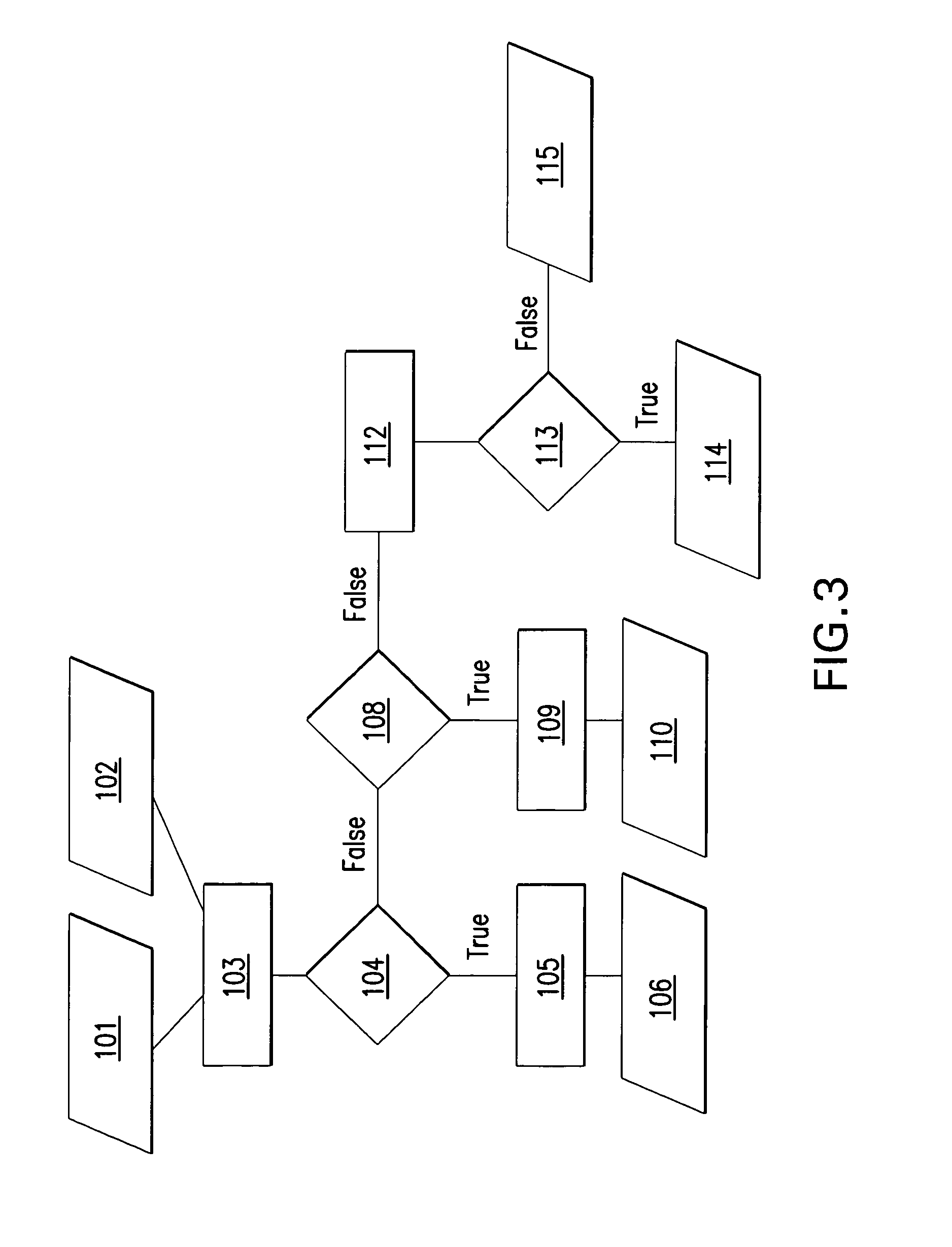Feedforward control processes for variable output hydrogen generators
a technology of variable output and control process, which is applied in the direction of combustible gas purification/modification, fluid pressure control, combustible gas production, etc., can solve the problems of inability to quickly change the hydrogen supply rate of the fuel cell, limited use of fuel cells, and inability to solve. , to achieve the effect of slowing down and reducing carbon monoxide emissions
- Summary
- Abstract
- Description
- Claims
- Application Information
AI Technical Summary
Benefits of technology
Problems solved by technology
Method used
Image
Examples
Embodiment Construction
Overview of Hydrogen Generators
[0039]In the processes of this invention a fuel (hydrocarbon-containing feed) is subjected to a chemical reaction, reforming, to produce hydrogen. Reforming is typically an endothermic, catalytic reaction conducted at elevated temperatures. The generation of hydrogen, for instance, for feed to a fuel cell will also involve the conversion of carbon monoxide produced in the reforming reaction to carbon dioxide. The conversion may be a water gas shift reaction whereby water and carbon monoxide are reacted to produce additional hydrogen and carbon dioxide. Another carbon monoxide conversion process is a preferential, or selective, oxidation reaction through which selectively carbon monoxide is oxidized in the presence of free oxygen to carbon dioxide. As is known in the art, the hydrogen generation process may include various operations for treating the fuel, such as desulfurization, and for preparing the hydrogen product for use in a fuel cell such as dew...
PUM
| Property | Measurement | Unit |
|---|---|---|
| temperatures | aaaaa | aaaaa |
| pressures | aaaaa | aaaaa |
| temperatures | aaaaa | aaaaa |
Abstract
Description
Claims
Application Information
 Login to View More
Login to View More - R&D
- Intellectual Property
- Life Sciences
- Materials
- Tech Scout
- Unparalleled Data Quality
- Higher Quality Content
- 60% Fewer Hallucinations
Browse by: Latest US Patents, China's latest patents, Technical Efficacy Thesaurus, Application Domain, Technology Topic, Popular Technical Reports.
© 2025 PatSnap. All rights reserved.Legal|Privacy policy|Modern Slavery Act Transparency Statement|Sitemap|About US| Contact US: help@patsnap.com



